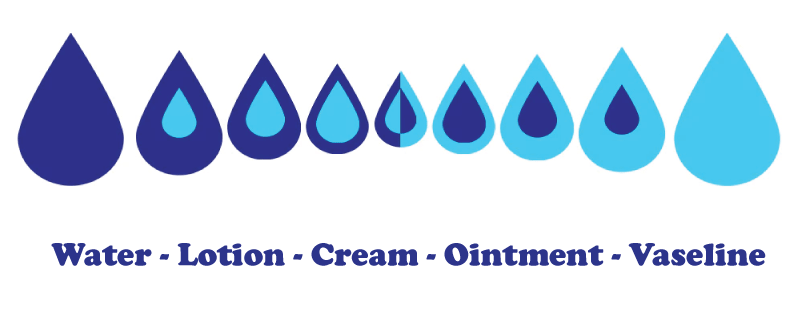Difference Between Cream and OintmentCreams & ointments are two forms of topical medications which are applied to the skin. In addition to treating skin disorders like itch, psoriasis, and acne, creams & ointments can also be used to relieve the pain, swelling, and other symptoms brought on by joint and muscle conditions. While having many similarities, creams, and ointments differ in terms of content, viscosity, and method of action. Taking a deeper look at ointments and creams and their mechanisms of action. 
Cream:Creams are a form of topical treatment that contains both water and oil. They usually soak fast into the skin and are light and simple to distribute. Creams are frequently used to treat skin disorders, including itchiness, redness, and inflammation. Also, they can be used to hydrate skin and shield it from irritation and dryness. Creams benefit from not being oily or leaving a film on the skin, which is advantageous. They may be used on broader skin regions and are very simple to apply. Depending on the ailment being treated, creams may contain several active substances, including steroids, antibiotics, or antifungal agents. Ointments:Ointments are a form of topical treatment consisting of oil and wax. They usually penetrate the skin slowly and are often thick and oily. Treatment for skin problems characterized by dryness, flakiness, or scaling involves using ointments. Moreover, they can encourage healing and shield the skin from future irritants. Ointments have the advantage of more efficiently transferring active chemicals to the skin than creams, which is one of its benefits. Moreover, they are more hydrating than creams and can act as a barrier to safeguard the skin from allergens outside. Depending on the ailment being treated, ointments may contain many active substances, including antibacterial and antifungal agents. ComparisonThere are many things to consider when deciding between a cream and an ointment. Creams are usually better for treating skin issues that entail inflammation, redness, and itching. In addition, they are less messy and easier to use than ointments. On the other hand, ointments are more effective for addressing skin issues that cause dryness, flakiness, & scaling. They can also act as a barrier to guard against future irritation and are more hydrating than creams. Creams and ointments differ from one another in their mechanism of action in addition to their variances in content and consistency. Creams operate by lowering swelling, itching, and other sensations linked to skin problems. They are often quickly absorbed into the skin. Ointments, on the other side, penetrate the skin more slowly and operate by hydrating and shielding the skin from external allergens. Also, it's crucial to remember that lotions and ointments may cause side effects like skin irritability and allergic responses. It's critical to utilize these drugs exactly as prescribed and to stick to your doctor's recommendations. According to the information provided above, some of the critical differences between cream and ointment rice are as follows:
ConclusionIn conclusion, creams & ointments are two different external treatments used for various skin disorders. As creams are often comprised of water and oil with a light texture, they are simpler to apply and more readily enter the skin. On the other side, ointments are thicker & greasier since they are formed of oil & wax and, therefore, better hydrate and shield the skin from additional discomfort. Depending on the severity of the skin problem and the required amount of moisturization and protection, one should choose between an ointment and a cream.
Next TopicDifference Between
|
 For Videos Join Our Youtube Channel: Join Now
For Videos Join Our Youtube Channel: Join Now
Feedback
- Send your Feedback to [email protected]
Help Others, Please Share










